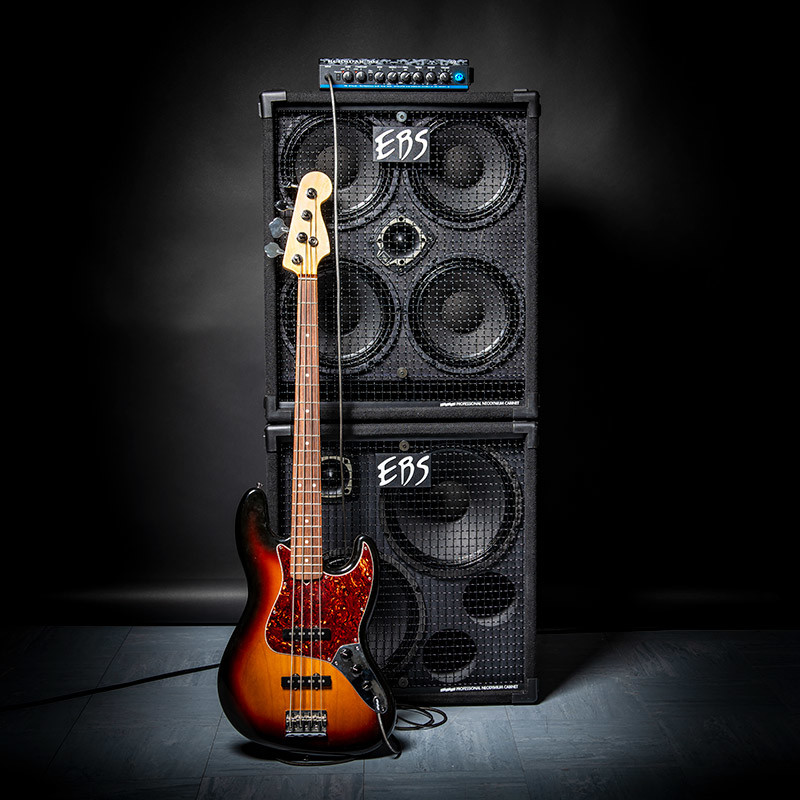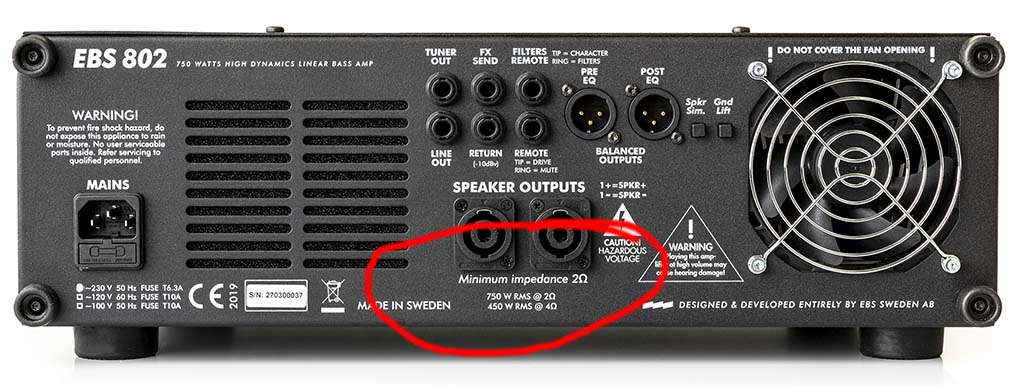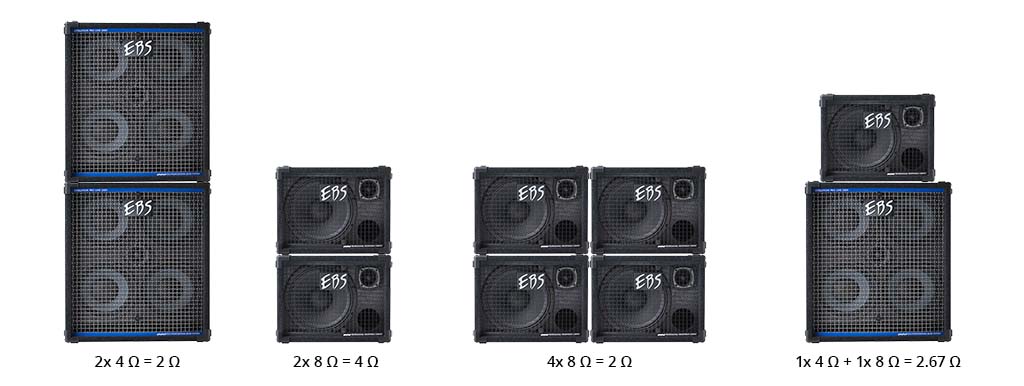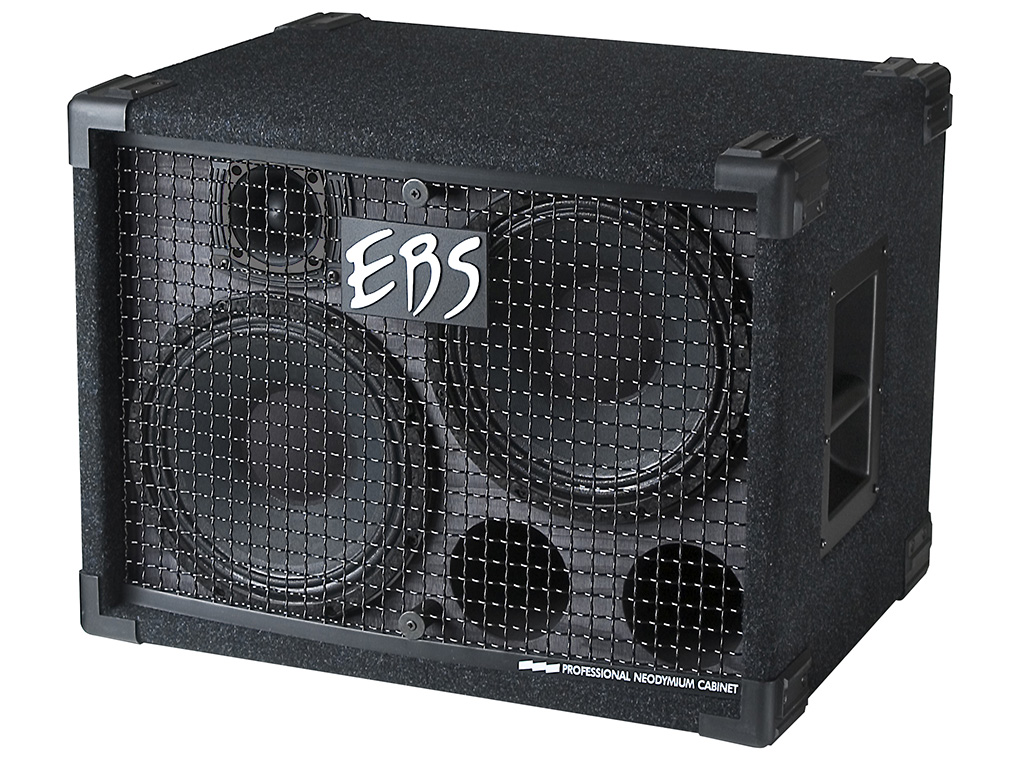How to Match Speakers with Your Bass Amp

Choosing the right speakers for your bass amp is important to get the most out of your amp and get the sound you want without damaging your equipment. This guide will provide the necessary information to make an informed decision about matching speakers to your bass amp.
Step 1: Understanding Ohm-Load
Ohm-load (or impedance) refers to the speaker’s resistance to the electrical current flowing from your amp. Ohm is often shortened with the Greek letter ‘Ω’. It’s like the resistance of a river flow against a dam. The lower the impedance, the easier it is for the current to flow. This is why an amplifier produces the most output power when connected to a speaker configuration matched with its minimum load impedance (least possible resistance).
However, NEVER attach a cabinet (or combination of speaker cabinets) that produces a total load lower than the amplifiers’ minimum impedance. It may damage the amp.

Bass amps are generally designed to handle a minimum speaker load of either 2 or 4 ohms (check on the back of the amp or in the manual for this information). Each speaker cabinet produces a load specified in ohm. To find out what the cabinet’s load is, check for the information on the back of the cabinet where you attach the speaker cable. Here is how to figure it out:
-
- With one cabinet, check the speaker load of your cabinet. It should not be a lower number than the minimum impedance capacity of your amp.
-
- When connecting multiple cabinets to your amp, ensure that the total load is never lower than the amp’s minimum impedance. The method of connection, whether serial or parallel, determines how to calculate the total load. Parallel connection always results in a lower total value than each cabinet’s individual load. Serial connection always yields a higher total value than each cabinet’s load. EBS cabinets always connect in parallel, regardless of whether they are connected directly to the amp or linked from one cabinet to another. Other brands may offer the possibility to use a serial connection, but it is not very common. When connecting several cabinets with equal loads in parallel, you can divide the specified load of one cabinet by the number of cabinets to determine the total load. If you are connecting cabinets with differing loads, you need to use a formula to calculate the total load (see the “For the nerdy”-section below).
Cheat sheet for the most common parallel combinations:
-
- Two cabinets with 4 ohms load each will make a total load of 2 ohms.
-
- Two cabinets with 8 ohms load each will make a total load of 4 ohms.
-
- Four cabinets with 8 ohms load each will make a total load of 2 ohms.
-
- One 4-ohm cabinet connected to one 8-ohm cabinet will make a total load of close to 2.67 ohms.

For the nerdy:
The formula for calculating total load when connecting in parallel goes:
1/Rt=1/R1+1/R2+1/R3+…
R1, R2, and so on refer to the load of Speaker cabinets 1, 2, etc.
Total Load= 1/Rt1
Example: 1/4+1/8=0,375 Total load= 1/0,375=2,67 OhmIf you ever need to calculate a serial load, add the impedance of each cabinet to the next, like 4+8 = 12 ohm. Serial connection is not a common practice in the bass equipment world though.
Step 2: Considering Power Handling
Power handling is the maximum power measured in watts a speaker cabinet can handle before possibly getting damaged.
The speaker cabinet should handle a power equal to, or higher than, the output of the amplifier at the cabinets given ohm value (see step 1). For example, if your amp delivers 500 Watts @ 4 ohms, choose a 4 ohm speaker with a power handling of 500 Watts or more. It ensures your speaker will not get damaged by the amp output. The power handling of each EBS cabinet is found in the specifications for each model on our website, but other speakers may have the information printed on them.
Note: Do not take for granted that an amp’s name tells accurate information about its power. Always check the specifications to decide what the continuous output is at the load of your cabinet (often specified as W RMS@ 4 ohms, etc.). Contact the manufacturer if it is unclear.
All current models of EBS amplifiers (and most previous) indicate the continuous output at the minimum load of the amp in their names. We believe that is the most honest, informative, and authentic way to name an amp.
Be aware that an amplifier with 500 watts output at 4 ohms usually delivers less output at 8 ohms, so if you have an 8-ohm cabinet rated below 500 W, it may still work well with an amp rated 500 W @ 4 ohms. Similarly, if the minimum impedance is 2 ohms, the amp likely produces less output at a 4 or 8 ohms load. The specifications in the manual should reveal this information.
Step 3: What about sensitivity?
Speaker cabinet sensitivity, also known as speaker efficiency, is a measure of how effectively a loudspeaker converts power (watts) into volume (decibels).
Sensitivity is usually specified in decibels (dB). The standard measurement is the sound pressure level (SPL) produced by one watt of power input, measured at a distance of one meter from the speaker. In the specifications of a cabinet, look for a value in dB labeled as Sensitivity or Efficiency.
Higher sensitivity means that the speaker will produce more volume for a given amount of power. A cabinet with high sensitivity can be beneficial if you have a low-power amplifier and want to build as loud rig as possible without the need for a more powerful amp.

Note though, that cabinets with very high efficiency, like the EBS NeoLine cabinets (shown above), might need a little extra boost on the low EQ to produce a great bass sound compared to a less effective speaker cabinet.
Step 4: Emphasizing Sound Quality
Remember, the ultimate goal is to create a great sound. Like an orchestra conductor, you want all elements to work together to build your desired sound. Therefore, consider the sound quality and characteristics of the speaker cabinet. Some may have more warmth, others may be known for their clarity, some provide a lot of low-end, and others a tight midrange. Take the time to listen to various speakers if you can, research online, ask seasoned fellow bass players, and contact the companies whose cabinets appeal to you to find the ones that best suit your taste and needs to create your dream setup.

Step 5: Making Your Choice
Now that you know what to consider, you are ready to build your dream setup. The amp and speakers are a team that should work together in harmony to deliver the ultimate performance. You can do this!
About EBS speaker cabinets:
EBS cabinets are available in three series:
-
- The ProLine is the reference line for the EBS sound.
-
- The NeoLine is a lightweight Neodymium series.
-
- The ClassicLine has a classic look and approach to bass sound.
All EBS cabinets are either 4 or 8 ohms, with the only exception being the EBS ProLine 610 cabinet which is an odd 3-ohm cabinet. The cabinet’s load is specified on the back of the cabinet.
When using more than one, all EBS cabinets connect in parallel. No matter if all are individually connected to the amp or linked, one cabinet to the other.
The EBS cabinets have different power ratings and sensitivity depending on the configuration and choice of speakers. The info for each current model is on our website. Go to the Cabinets section, select the series, and then hit the Specifications tab.
In case you do not find the answers to your questions about EBS on our website or have any additional questions about the content in this article, contact our crew.
